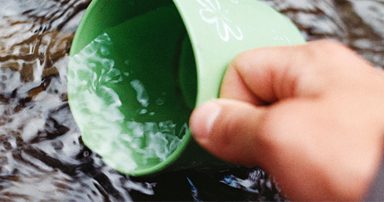Ordinary Wisdom
[Mick] A couple of points of clarification. First off, There seems to be a mixing of the lingo for herbal medicine and homeopathic medicine in the discussion. What it sounds like you’re discussing is the grafting of a homeopathic remedy by making it into a liquid dilution (a liquid remedy) that is then made into an aqueous solution (also called a water dose) by adding the liquid dilution to a few ounces of water. This liquid dilution (and the subsequent water dose) are not tinctures or diluted tinctures. Tinctures are alcohol extracts of herbs; you take the relevant plant part (leaf, flower, seed, root, whole plant, etc… either fresh or dried, depending) and soak it in a liquid that is part alcohol and part water, in order to extract the medicinal constituents of the herbs. Herbal tinctures are shaken for 2 weeks (or longer, if made of cut-and-sifted herbs rather than powder) before the herbs are strained out. Homeopathic liquid dilutions and water doses are ready as soon as the pellets have dissolved in the liquid and the bottle has been shaken (or the glass has been stirred). So… for making liquid dilutions, I tend to use 1/2-ounce dropper bottles. This because: (1) I’m a cheapskate; (2) 1/2-oz dropper bottles are way, way cheaper than 4- or 8-oz bottles; (3) it takes a fair amount of time to go through 1/2 ounce of a liquid remedy because the dose is only 5 drops; (4) it takes a lot of vodka to make 4 or 8 oz of a liquid dilution; and (5) your 4- or 8-oz bottle of liquid dilution would more than likely evaporate before you’d have a chance to use it all. In other words, it’s much more cost-effective to make liquid dilutions in smaller bottles. If you’re interested in 1/2-oz dropper bottles, I like the Vivaplex brand sold on Amazon; but there are other places that sell them (but the prices may be higher). Regarding the making of herbal tinctures, Kris is correct that they’re usually made in 1/2-gallon or 1-gallon jars and then stored in pint jars or quart jars. For dispensing the herbal tinctures, I prefer to use 1-oz or 2-oz dropper bottles; the 1/2-oz bottles have to be filled more often, and the 4- and 8-oz bottles are pricey. Sorry this is so wordy; I hope it helps rather than confuses the situation




















0 Comments